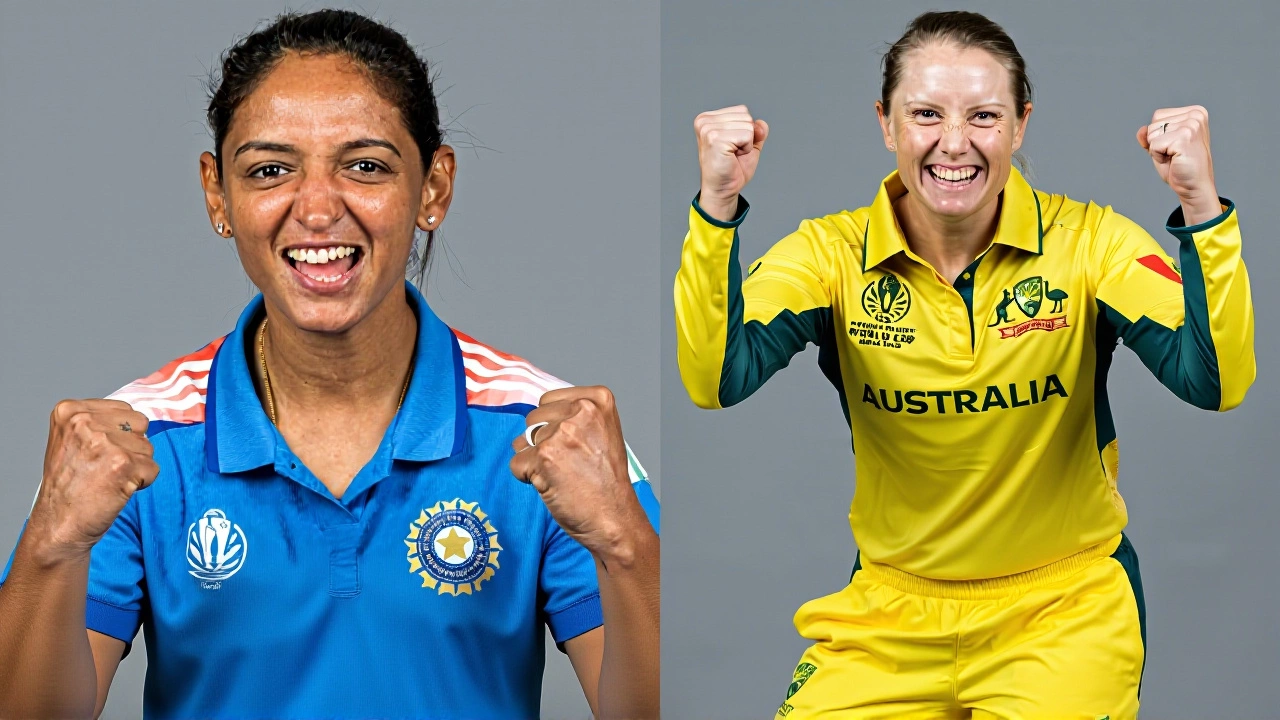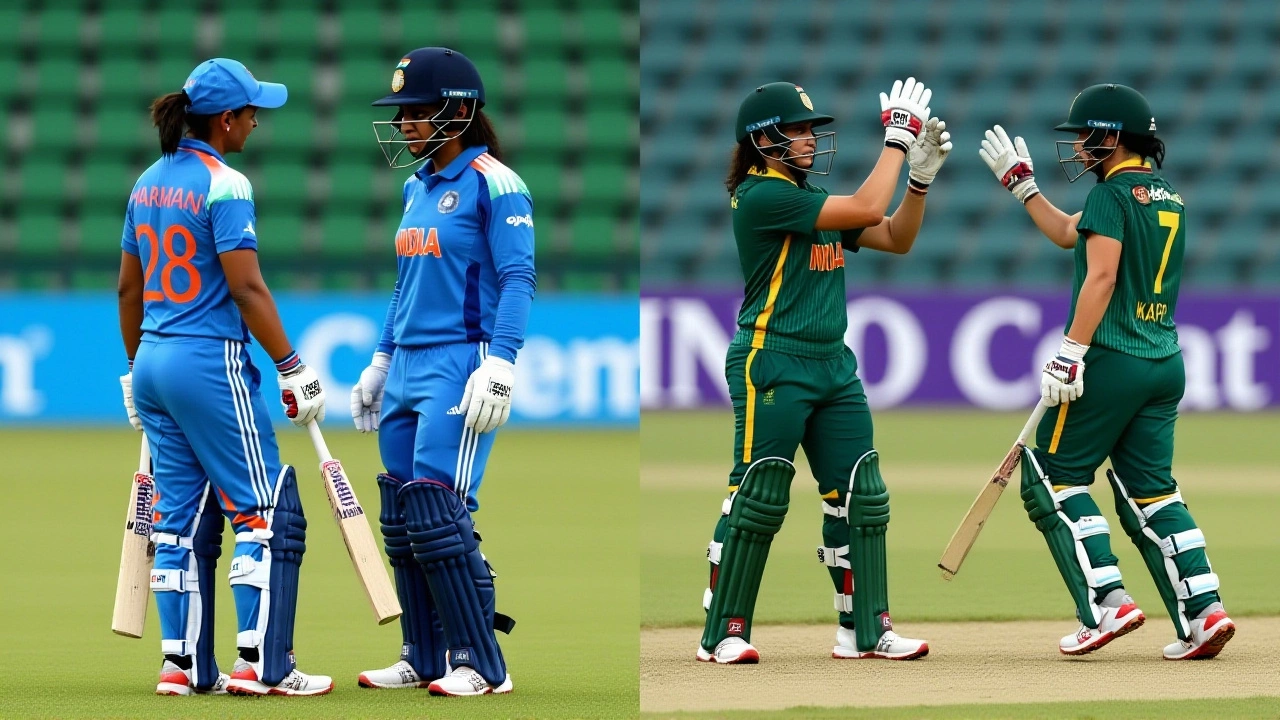In a match that had fans on the edge of their seats, South Africa Women pulled off a stunning 3-wicket victory over India Women in the 10th match of the ICC Women's Cricket World Cup 2025Visakhapatnam on Thursday, October 9, 2025. Chasing 252, South Africa needed 12 runs off the final 12 balls — and then, in the last over, Nadine de Klerk unleashed a blitz of two sixes off Amanjot Kaur to seal the win with two balls to spare. It wasn’t just a win. It was a statement.
India’s Batting Firepower Falls Short in Final Over
India Women looked in full control after Richa Ghosh smashed a blistering 94 off 77 balls — her innings laced with 11 fours and 5 sixes. She anchored the top order as India posted 251/10 in 49.5 overs, a total that felt competitive on a slow Visakhapatnam pitch. Pratika Rawal added a crucial 37, but the middle order collapsed under pressure, losing 4 wickets for just 42 runs between overs 30 and 40. Sneh Rana and Kranti Gaud chipped in with two wickets each, but India’s bowling lacked the cutting edge needed to defend the total.What made it worse for India was the lack of a finisher. With Ghosh gone, the lower order couldn’t accelerate. The final over, bowled by Amanjot Kaur, was supposed to be a formality. Instead, it became a nightmare.
De Klerk’s Heroics Steal the Show
South Africa Women’s chase was methodical, then explosive. Laura Wolvaardt laid the foundation with a patient 70 off 111, absorbing pressure and rotating strike. But it was Nadine de Klerk who turned the game on its head. Walking in at 81/5 in the 20th over, she was the last recognized batter. What followed was pure theatre.De Klerk’s 84 off 54 balls — including 8 sixes and 5 fours — had a strike rate of 155.55. She didn’t just hit boundaries; she obliterated them. Her 6th six came in the 47th over off Chloe Tryon’s bowling — a full toss, creamed over midwicket. But the final over? That was cinema.
With 12 needed off 6 balls, Amanjot Kaur, India’s youngest bowler, was handed the ball. First ball: dot. Second: dot. Third: dot. Then — six. Fourth: dot. Fifth: dot. Sixth: six. The crowd, which had been roaring for India, fell silent. Then erupted. De Klerk raised her bat, eyes wide, as her teammates sprinted from the pavilion. She didn’t just win the match — she rewrote the script.
South Africa’s Bowling Resilience
While de Klerk stole the headlines, it was South Africa’s bowlers who kept India in check. Chloe Tryon was the standout, claiming 3/32 in 10 overs — her variations and clever changes of pace troubling India’s aggressive batters. Marizanne Kapp added 2/45, including the crucial wicket of Ghosh in the 43rd over. The fielding was sharp too — Sinalo Jafta (wicketkeeper) effecting a sharp stumping and a direct-hit run-out that changed momentum.India’s spinners, especially Sneh Rana, bowled with discipline, but the lack of a death bowler exposed them. Amanjot Kaur, just 20, was thrust into the pressure cooker and didn’t have the experience to handle it. That’s not blame — it’s context. The game demanded a veteran, and India didn’t have one on the pitch.

What This Means for the Tournament
The win moved South Africa Women into the top four of the points table — a remarkable turnaround after their 125-run loss to England earlier in the tournament. Their Net Run Rate remains a negative -0.888, but the belief is growing. As commentator Ashish Pant put it: “They’ll believe they can still make it to the semis.”For India Women, it’s a bitter pill. They were favorites to win this match. They had the home advantage, the momentum, and the batting firepower. But cricket, at this level, doesn’t reward potential — only execution. The loss leaves them in a tight race for the semis. Their next challenge? A high-stakes clash against Australia Women on Sunday, October 12, in Mumbai. A loss there could end their campaign.
Behind the Numbers: Why This Match Matters
The numbers tell a story of contrast. India’s run rate: 5.03. South Africa’s: 5.16. A mere 0.13 difference — but in a high-pressure chase, that’s everything. De Klerk’s 84 accounted for nearly a third of South Africa’s total. She faced just 54 balls — the same number of balls India’s top order took to lose 5 wickets.This was the kind of match that defines tournaments. One batter, one over, one moment. And it wasn’t the most experienced player who delivered. It was the one who stayed calm under the brightest lights.
Frequently Asked Questions
How did Nadine de Klerk’s performance compare to other match-winning innings in Women’s World Cup history?
De Klerk’s 84 off 54 balls ranks among the fastest match-winning knocks in Women’s World Cup history. Only 12 innings in the tournament’s history have featured a higher strike rate in a winning chase under pressure. Her 8 sixes tied the record for most in a single innings by a woman in World Cup play — matching Ellyse Perry’s 2020 feat. What sets her apart is the timing: she struck 5 of her 8 sixes in the final 10 overs, with the last two coming in the final over under maximum pressure.
Why did India struggle to close out the match despite posting a competitive total?
India’s bowling lacked variety in the death overs. Their frontline spinners — Sneh Rana and Kranti Gaud — were economical but didn’t create enough pressure. Amanjot Kaur, a young pacer, was given the final over with no backup plan. South Africa’s middle order, led by de Klerk and Wolvaardt, capitalized on loose deliveries. India also missed key fielding chances — two dropped catches in the 35th over could have changed the game.
What’s the significance of South Africa reaching the top four despite a negative Net Run Rate?
South Africa’s NRR of -0.888 is among the worst ever for a team making the top four in a 10-team World Cup. But the tournament’s structure allows teams to qualify on points alone if they win enough games. With three wins now, they’re ahead of teams like New Zealand and West Indies on head-to-head results. Their next two matches — against Pakistan and Bangladesh — are winnable. If they win both, they’ll qualify regardless of NRR.
How has India’s performance changed since their opening match against England?
India started strong, beating England by 57 runs, but since then, they’ve shown inconsistency. Their top order has been shaky — only Richa Ghosh has crossed 80 in four innings. Their spinners are effective, but their pace attack lacks penetration. The loss to South Africa exposed their over-reliance on Ghosh and the absence of a reliable finisher. Against Australia, they’ll need a complete team effort — not just one brilliant innings.
What role did the pitch in Visakhapatnam play in the match outcome?
The Visakhapatnam pitch was slow and low, favoring spinners early but offering little bounce later. It made stroke-making difficult, which is why de Klerk’s power-hitting stood out — she didn’t just adapt, she dominated. India’s batters struggled to time the ball, while South Africa’s openers played smartly, leaving the spinners to the middle overs. The dew in the evening made the ball heavier, aiding the chase — a factor India’s bowlers didn’t account for.
Who are the likely semi-finalists now, based on this result?
Australia, England, South Africa, and India are now the top four on points. Australia, undefeated, are clear favorites. England, despite their loss to South Africa, have a superior NRR. India’s fate hinges on beating Australia. If they lose, they’re out. South Africa needs to beat Pakistan and Bangladesh. New Zealand and West Indies are mathematically alive but need massive upsets and favorable NRR swings.

